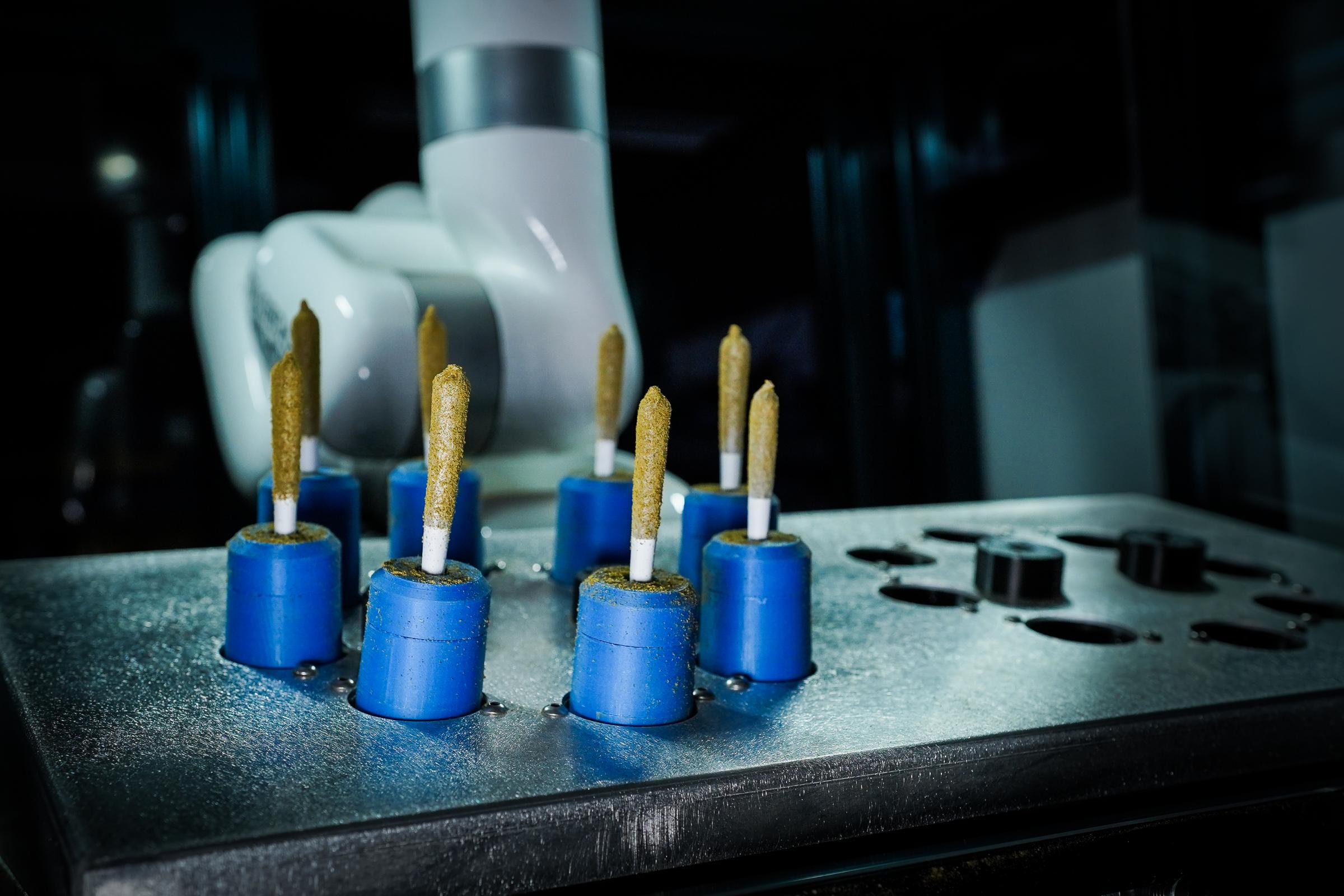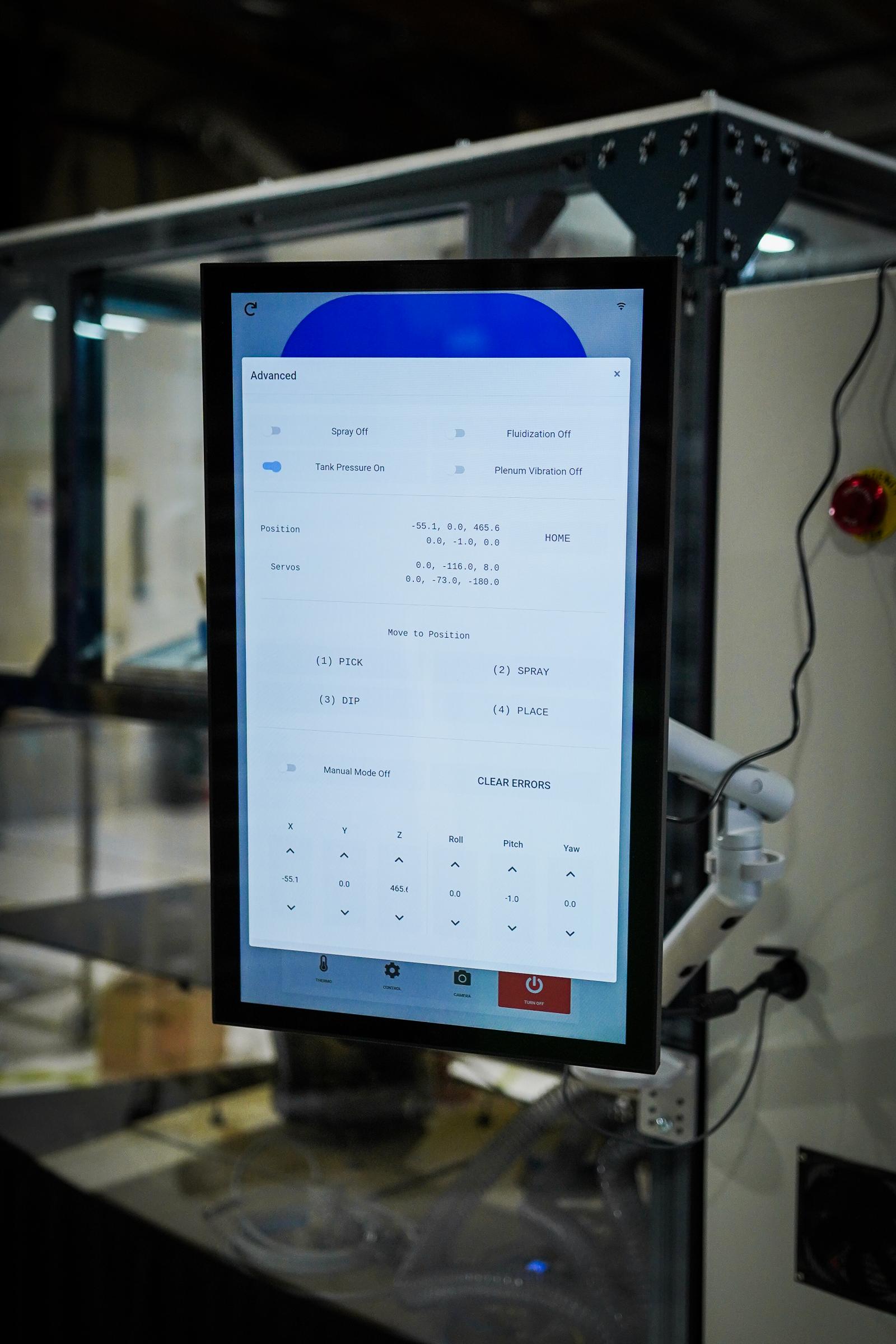Pre-rolls are a major driver of growth in the cannabis market, with companies increasingly focusing on premium offerings. They present a wide array of configurations, enabling brands to either target specific niches tightly or expand their reach to a broader consumer base.
In a revealing interview with Benzinga, Nohtal Partansky, co-founder and CEO of Sorting Robotics, introduced Stardust, their latest robot designed to coat joints and diversify the pre-roll segment in the cannabis industry.

Follow The Market
Partansky emphasized that while their Jiko robot efficiently infused pre-rolls internally, there was a growing demand for an automated solution for external kief coating, in line with evolving consumer preferences.
In 2019, when the pre-roll wave was taking off, the market primarily focused on interior infusion for potency. However, certain trailblazer cannabis brands are shifting consumer dynamics, underscoring the significance of exterior infusion.
Glazed
This approach not only enhances THC percentage but also adds cosmetic appeal. Partansky compared coated pre-rolls to a glazed donut with sprinkles, highlighting the importance of aesthetics in addition to potency.
"Brands are seeking exterior infusion, mainly for the cosmetic appeal, akin to a glazed donut with sprinkles. The sprinkles may not add much, but they look cool and offer a unique mouthfeel, which I relate to. This mindset, especially prevalent over the past few years as we marketed Jiko, positioned it as an alternative for exterior infusion,” He said.
“However, earlier this year, I noticed customers were both injecting and applying kief, signaling a clear market shift towards both processes. So, we decided to develop a solution that caters to both needs."
Working With Sicky-Icky Can Be Messy
The development of Stardust presented unique engineering challenges. Sorting Robotics had to consider the intricate requirements of exterior kief coating for pre-rolls, involving complex and messy processes.
In terms of how Stardust operates, Partansky explained that the process begins with placing joints, blunts, or other pre-roll types into small holders called pods.
These pods are then loaded into the machine. A robotic arm within the machine can pick up eight pods at a time, allowing for efficient processing, resulting in approximately 16 joints coated per minute. However, plans include scaling up to 12 pods at a time, increasing the production rate to about 24 joints per minute.

The machine comprises several key stations, including a spraying station and a dipping station.
In the spraying station, the joints are individually sprayed 360 degrees with either distillate or cigar glue, creating a thin but tacky layer. Finding the right type of nozzle and achieving the right spray characteristics, including temperature, viscosity and pressure, was a complex endeavor.
Subsequently, the joints move to the dipping station, where they are coated with kief, crushed diamonds, bubble hash, or powdered cannabis material.
Save Costs In Cannabis Manufacturing
Partansky emphasized that this automated process minimizes common issues associated with manual kief coatings, such as overspray, uneven application and messiness.
The machine operates in a controlled environment, preventing loss of materials. The result is a streamlined and efficient process that eliminates the need for 5 to 10 manual laborers and reduces the entire operation to a single operator.
Avoid Bottlenecks
The Stardust addresses a common bottleneck in the industry and allows for further growth and profitability. On average, businesses using the machine could save at least $10,000 per month. This figure was based on the labor and product cost reductions achieved through automation.
The machine's speed, offers a significant increase in efficiency compared to manual processes, potentially saving tens of thousands of dollars monthly for businesses, depending on their scale of production.
Key Innovations: The Kief Tornado
The most common issue in mass-producing coated joints is achieving a consistent glaze.
Often, coatings like kief, diamonds or bubble hash on these joints are applied unevenly, resembling a crumbly apple crumble, leading to sharp or loose edges that cause the material to fall off.
To address this, Sorting Robotics developed a 'kief tornado' technique, ensuring each particle is meticulously aligned, with no overlaps.

This process involves millions of dried trichomes — tiny crystal-like glands on the plant's surface, rich in terpenes and therapeutic benefits, evenly distributed over the joint's surface using high-velocity wind.
Upon close inspection, the trichomes appear neatly parked next to each other, resulting in a smooth, even kief distribution that gives the joint a frosted appearance.
Partansky explained that when the joints are pulled through the "kief tornado" in the dipping station, the process is akin to a lollipop passing through a dust storm.
“If you have a lollipop and you go into a dust storm at the end of the dust storm, that lollipop is going to have an even coat of dust all over the lollipop,” Partansky explained.
Does The Stardust Has A Moon Rock Mode?
Stardust's moon rock mode, allows the machine to apply layers of keif, THC-crushed diamonds, or other materials to create intricate patterns and designs on the coated joints.
Partansky highlighted the versatility of this feature, comparing it to creating works of art and offering a myriad of possibilities for enhancing product aesthetics.
He also mentioned that Stardust's ability to efficiently and consistently produce moon rocks or other coated products at scale could open up new opportunities for businesses to add value to their offerings.
"We create a mist of distillate or adhesive, then spin the joint in it for a precise duration, allowing it to attach evenly. The length of time in the mist can be extended for a thicker layer, as we did when experimenting with moon rocks,” Partansky explained.
“For these, we left the bud in the distillate longer, then in the kief, repeating the process to build layers. Essentially, the machine passes the cannabis bud through a distillate cloud, making it sticky, followed by a 'dust storm' of kief. This results in an evenly layered coating of both kief and distillate on the bud."
A Layered Cake
"For the moon rock mode, you load the buds into what we call 'pods,' but these pods use a small fork-like device instead of holding the bud directly. This fork grips the bud, ensuring it's held firmly. The process then involves spinning the bud to achieve even coverage, layering distillate, and kief repeatedly to the desired thickness,” Partansky concluded.
“What's exciting is the system's versatility; it allows for varied layering. For example, you can create layers of moon rocks with multiple layers of kief, followed by layers of THC-crushed diamonds. This technique can make the final product resemble a layered cake when cut open."

All Photos: Courtesy of Sorting Robotics.
© 2025 Benzinga.com. Benzinga does not provide investment advice. All rights reserved.
Trade confidently with insights and alerts from analyst ratings, free reports and breaking news that affects the stocks you care about.
Cannabis is evolving – don’t get left behind!
Curious about what’s next for the industry and how to leverage California’s unique market?
Join top executives, policymakers, and investors at the Benzinga Cannabis Market Spotlight in Anaheim, CA, at the House of Blues on November 12. Dive deep into the latest strategies, investment trends, and brand insights that are shaping the future of cannabis!
Get your tickets now to secure your spot and avoid last-minute price hikes.